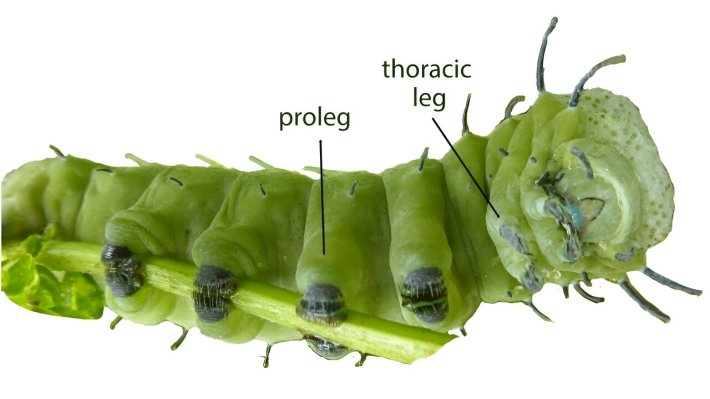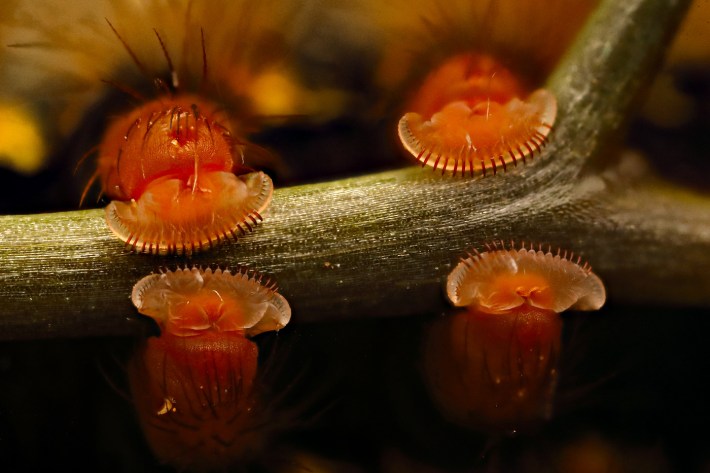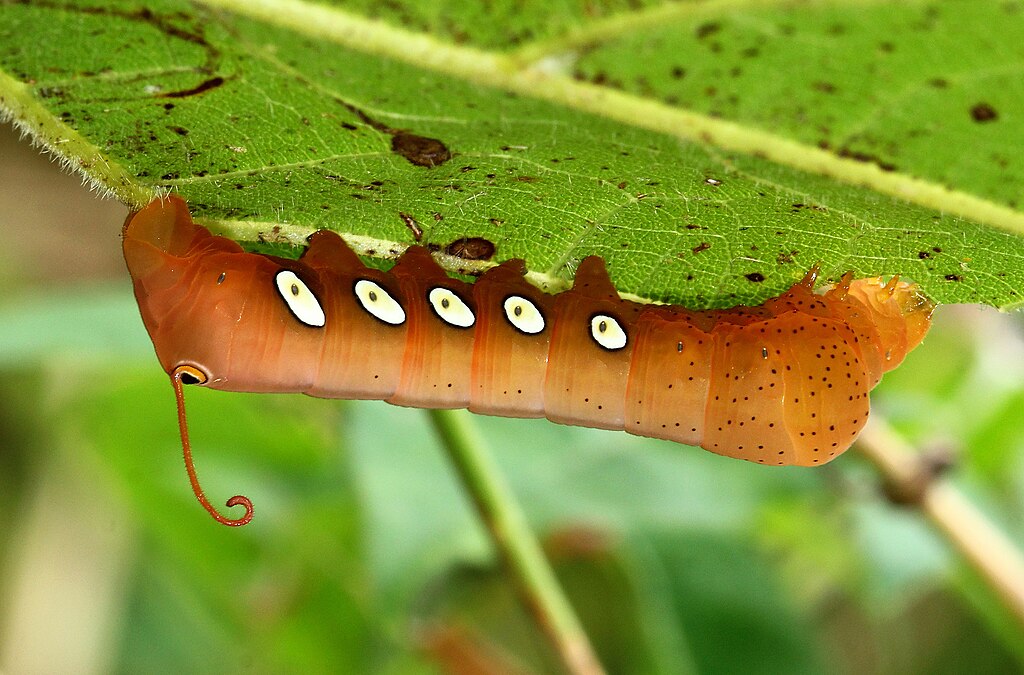An article appeared in the magazine earlier this month Scientific advances explaining how the caterpillars got their “chubby legs,” a description that at first seemed quite judgmental. The caterpillar’s job is to eat as quickly as possible all it can and grow as much as possible. Of course there will be chubby legs growing out of its chubby body. But as I read more about the paper, I realized is a key difference. The chubby, stump-like legs that help the caterpillar move along leaves and stems aren’t really legs at all. They’re false legs also known as “prolegs”—stumpy tufts of flesh that allow the caterpillar to move.
A caterpillar’s true legs, the ones that turn into their final adult legs like a moth or a butterfly, aren’t even used for walking. These three pairs of legs, called thoracic legs, are all grouped around the caterpillar. In fact, the caterpillar is able to move easily even though all six of its “real” legs have been removed or immobilized, raising the eternal philosophical question: Should a leg be defined by anatomy or function? Is a fake leg capable of walking, lifting, and grasping any less “real” than so-called “real” legs used for any of these things? What is authenticity for a foot?
If you already knew about the big caterpillar leg scam, I applaud your wisdom and knowledge. In hindsight, maybe I shouldn’t have been so surprised. Adult insects generally have three pairs of legs, so it would seem odd for young insects to have, say, 20 legs and then simply discard most of them as they grow. And the caterpillar on the cover of the key text many of us are introduced to this caterpillar by Eric Carle A very hungry caterpillaris scientifically accurate in that it has six legs (two are located at the back of the caterpillar’s body, which is less accurate; these are called anal prolegs and are also deceptive).

This leg-based revelation is also not surprising in the grand scheme of arthropods, a phylum named for their jointed legs. If there’s one thing I can expect from an arthropod, it’s a surprising evolutionary redesign of the leg. Insects known as water boatmen have turned their legs into paddles; dung beetles turned their legs into scythes and spurs to cut dung into balls and roll the balls back home; the venom-injecting fangs of house centipedes are actually highly modified legs, and their hind legs are long enough to match their true antennae. But a diagram of caterpillar legs that does not represent a modification of an anatomical leg, but an evolution of a fleshy appendage that looks like a leg, walks like a leg, and would easily pass as a common runabout in polite society. mill leg, was very surprising to me.
So how does a caterpillar get its false legs? (I won’t use “proleg” because it’s too close to “prolapse”.) Scientists weren’t sure if the fake legs were actually just another kind of modified real legs, if they were modified lobes of real legs, or something entirely new. . A new paper suggests that fake legs are not related to real legs at all. Instead, some of the genes expressed in the caterpillar’s chubby false legs were actually responsible for the crustacean’s legs.

Unlike us bony humans, caterpillars cannot independently move their false legs to step forward. Instead, they use their fake legs like anchors clinging to any surface they float on. To move forward, caterpillars separate their false legs from back to front and hold them in the air as they contract their muscles, tilt their body forward, and then lower their false legs to anchor them again. The tip of each caterpillar’s false leg is a small spiny pad called a hook, which acts like Velcro, attaching the hooks to a leaf, twig, and any other substrate the caterpillar chooses to walk on. Who needs legs when you have sticky stumps!
Perhaps authenticity, at least genetically speaking, has no meaning for the legs of this species. Legs, philosophically speaking, don’t have to be permanent. Just look at the frogs! Some appendages are fickle and appear in flashes of youth to help hungry caterpillars find more food. So the next time you encounter a caterpillar, enjoy the fact that you’re seeing the most fleeting of legs, stocky footstools that will soon exist only in the realm of memory, so cherish them while you can.



